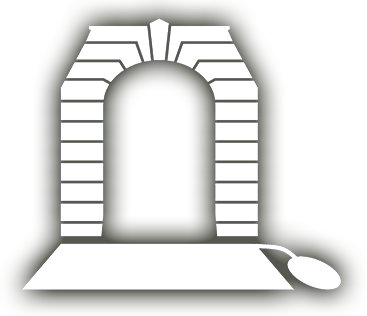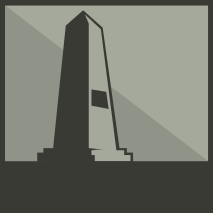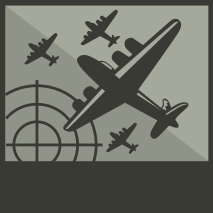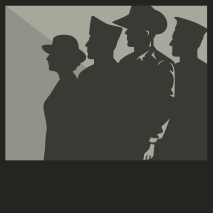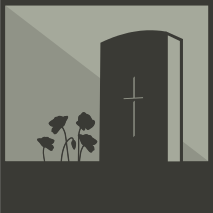KADER, Leonard
| Service Number: | SX8628 |
|---|---|
| Enlisted: | 12 July 1940, Adelaide, South Australia |
| Last Rank: | Private |
| Last Unit: | 2nd/48th Infantry Battalion |
| Born: | Perth, Western Australia, 1 January 1909 |
| Home Town: | Adelaide, South Australia |
| Schooling: | Sturt Street Public School,Adelaide, South Australia |
| Occupation: | Bottle shop manager South Australian Hotel |
| Died: | Natural causes, South Australia, 23 January 1977, aged 68 years |
| Cemetery: |
Centennial Park Cemetery, South Australia RSL Wall 108, Niche DO12. |
| Memorials: |
World War 2 Service
| 12 Jul 1940: | Enlisted Private, SX8628, Adelaide, South Australia | |
|---|---|---|
| 12 Jul 1940: | Enlisted Australian Military Forces (WW2) , Private, SX8628, 2nd/48th Infantry Battalion | |
| 13 Jul 1940: | Involvement Private, SX8628 | |
| 18 Oct 1945: | Discharged Private, SX8628, 2nd/48th Infantry Battalion | |
| 18 Oct 1945: | Discharged Australian Military Forces (WW2) , Private, SX8628, 2nd/48th Infantry Battalion |
Shanghai Son.
Leonard Nadir Kader came from a talented family. His father, Shaikh Said Abdul Kader, highly educated at Bombay College, a speaker of eight languages and an astute businessman, was a Muslim from British India. He came to live in the Pilbarra area of Western Australia in the early 1900’s. He was frequently the author of Letters to Editors in a variety of different newspapers when the White Australia policy was gaining traction at a time where all ‘darker skinned’ people were lumped together as being Afghan. He was a strong advocate of the cameleers, so essential to the transport of materials and products, especially in regional areas. Ironically, these same British subjects were banned from holding miner’s and water rights or being store keepers.
Shaikh Said’s son, Leonard, known as Len, was born in Perth, Western Australia on the 1st January 1909. The following year Shaikh challenged a prejudiced local MP who suggested all ‘half-caste’ children should be strangled, intelligently displaying his vast historical knowledge, citing numerous European Royalty who had married outside their geographical homes. Tellingly, he strongly argued that British Rule was founded on fairness and justice, with people being judged on their actions, not the colour of their skin. Shaikh also wrote to dispel concocted allegations that Afghan men sold their wives.
The family soon moved to Adelaide where Len attended the Sturt Street Public School. During the years of WWI students were particularly aware of the conditions of war when restrictions were applied. Equally, the young State was well-aware of the young men who had enlisted and the sacrifices they made. Len had just turned 13 when his school was involved in honouring Corporal Jorgen Christian Jensen V.C. In a solemn ceremony, his Union Jack covered hearse, carried on top of a gun carriage drawn by black horses, processed to the West Terrace A.I.F. Cemetery. Jensen’s hat, belt and medals rested on top of the coffin. Hundreds of fellow soldiers, marching four abreast followed. The bare-headed students from Len’s Sturt Street School lined the route, standing silently, paying their last respects. A firing party gave a three fired salute followed by the playing of ‘The Last Post’. It was a stirring and memorable occasion for the students.
Len’s father wrote feelingly about the loss of Lord Roberts who was visiting the Indian troops in France during WWI when he died. Lord Roberts was known as ‘Our Grand Old Dad’ by the British Indian Army in which Shaikh Said served.
Len grew up in an era when most young boys owned a shanghai, fashioned from whatever materials were available. This primitive tool was usually used to knock down a bird or other unsuspecting small animal that would often then be added to the family’s dinner table. (The other precious belonging for young boys was a pocketknife, if it could be afforded.)
Len’ father regularly attended a Muslim mosque for devotions which took over two hours to perform. Len was outside and took a pot shot at a bird and missed. In doing so he was grabbed around his throat by an elderly Indian man who accused Len of trying to break windows of the mosque and took the shanghai from Len. At that point, Len’s father emerged from the mosque to find his son in tears.
As a fifteen-year-old Leonard then had the daunting role of appearing in front of the Adelaide Police Court in August ’24. Before the case proceeded, Len took the Mohammedan oath by placing a handkerchief on his head, prior to giving his statement about the assault. During the hearing the accused constantly interrupted Len ‘in an unknown tongue’, (unknown to the Court.) While a technical assault was proved it was considered ‘of a trivial nature’ with an observation made that “We all have had our shanghais and have had them taken away from us” and the case was dismissed. (Quite a different attitude to modern day assault charges.)
Post school, Len became a Bottle-shop manager at the South Australian Hotel Wine Cellars on North Terrace in the city (Later to become the Stanford Plaza.) He also ran a Newsagency in Wright Street.
In 1931, Len married Eileen Mary Warner with the two having four children. In another incident of seemingly petty fines, Len was charged with riding his bike on a footpath in March ’37 where he was fined £1 costs.
With the outbreak of WWII, it was unsurprising that Len enlisted on the 12th July 1940, given the strong example of patriotism set by his father. Len became SX8628 and was placed in the newly formed 2/48th Battalion reinforcements, choosing to give just his first and last names, omitting his middle name of ‘Nadir’. He enlisted with his Primary school friend, Victor Young (SX8636) in the same battalion.
By February ’41, Len and Victor embarked for the Middle East, disembarking on the 23rd March and immediately began intensive training at the Amiriya Training Camp. They were soon to become part of the famed and highly respected Rats of Tobruk. Ironically, this term was designed to destroy moral and encourage the soldiers to surrender, rather than live ‘like rats’ in their hot, dusty, fly and rat-infested hand-hewn dugouts. Ironically, the taunt had the opposite effect with it being seized on as a Badge of Honour.
Sadly, that year was coloured by the death of Len’s much-admired father in Melbourne on the 11th December. The Advertiser carried a tribute summarising this unique man. ‘NOTED SHEIK DIES The death was recorded ln this paper yesterday of Sheik Abdul Kader in Melbourne on December 10. George Burford. of Cobber Pedy, came in and told me that Abdul was an interpreter at Supreme and Police Courts in Adelaide, Melbourne and Sydney for years. He was a merchant; travelling between Australia and the East and used to bring high-class silks out here; and he made numerous trips to Mecca."He was a man of most powerful physique," Mr. Burford said. “I have seen him up in Central Australia lifting surprising weights on camels." Abdul was buried in the Islamic section of Fawkner Memorial Park.
In the ensuing years of overseas service, Len annually placed a tribute to his father on the anniversary of his death.
Advertiser Monday 22 December 1941, KADER. —On December 19, at Melbourne, Shiek Abdul, beloved father of Leonard Kader (A.I.F. abroad). At rest.
Advertiser Monday 21 December 1942, KADER. —In loving memory of my dear father, Shiek Abdul, who passed away Dec. 19, 1941. Always remembered. —Inserted by his loving son, Leonard (A.I.F., abroad).
Advertiser Tuesday 21 December 1943, KADER.—ln loving memory of dear father, passed away Dec. 19, 1941. Not just today, but every day, In silence I remember. Remembered by his son Leonard (A.I.F., N.G.).
In July ’42, Len’s 33-year-old friend Victor L.J. Young was killed in action in Egypt during the attack at the Hill Of Jesus. Vic’s family and friends placed tributes to him in the Advertiser with Len’s reading ‘DIED ON ACTIVE SERVICE YOUNG, Pte. V. L. J..—Killed in action in Egypt, July 22, Vic. dearly beloved friend of Len Kader (AIF abroad ). He will always be remembered.’
During the intense fighting over October and November Len received a gunshot wound to the right side of his chest and was hospitalised.
The November ’42 issue of the Chronicle carried the names of those injured with Len. The 2/48th Battalion was particularly affected. ‘Dangerously Wounded. — SX8280 Pte. J. H. Abraham, Moonta Mines; SX7824 Pte. Cyril A. Braund. Pt. Victoria, Seriously Wounded.— SX12499 Lt. George J Butler, Henley Beach;(Later died of wounds in N.G.) Wounded In Action.— SX9092 Pte. John. W. P Digan. Adelaide; SX13636 Fte, Kenneth F. Goldner, Colonel Light Gardens; SX7502 Pte. Norman J. Leaney, Maylands; SX10090 A-Sgt. John G. Glenn, Victor Harbor; SX6865 Pte. Robert T. McLaren, Barmera; SX11802 Pte. Alan H Harradine. Adelaide; SX8628 Pte. Leonard Kader, Adelaide; SX7512 L-Sgt. A. R. Cross, Wallaroo Mines; SX14264 Pte. Harold M. Cates, Portland; SX11090 Pte. Howard K. Eastick, Brighton; SX12801 Fte. George C. Bradford, Col. Light Gdns.; SX7436 Pte. John D. Cox, Woodville; SX8595 Pte. Francis W. Botten, York; SX10848 Pte. Alfred C. Capper, Ovingham; SX6931 Pte. Oscar J. Aesche, Monarto; SX8910 Pte. Jack R. Cufley, Allenby Gardens; SX7866 Pte. Raymond A. W. Bloffwitch, Bowden.
Back home, The Advertiser advised that ‘Mrs. E. M. Kader, of 115 Gouger street, city, has been notified that her husband, Pte. Leonard Kader, has been wounded in action in Egypt. Pte. Kader went overseas early last year, and has served in Tobruk, Syria, and Egypt.’
Len was able to return to his battalion for Christmas. By the start of February ‘43, he and his surviving fellow soldiers finally returned to Australia via Melbourne.
Inevitably, the wound to Len’s lung continued to cause trouble, but he trained in Queensland in preparation for facing a very different enemy in the humidity of New Guinea and arrived in Milne Bay. He was soon under the care of the field ambulance but his health was also affected by several bouts of malaria before he was able to return to Townsville. Not unexpectedly, Len chose to have ‘unofficial’ leave costing him both pay and being confined to barracks for five days. His malaria continued to flare while he undertook Camouflage training and a return to Tarakan. Predictably, Len was diagnosed with nervous exhaustion in August ’45 and a return to Australia where his total health then became a long overdue medical focus while he was at Wayville. He was discharged on the 18th October, ’45.
Aged 68, Len died on the 23rd January 1977. He now rests in the Centennial Park Cemetery, RSL Wall 108, Niche DO12. Eileen lived for a further two decades and died on the 7th July ’97.
Researched and written by Kaye Lee, daughter of Bryan Holmes SX8133, 2/48th Battalion.
Submitted 2 September 2025 by Kaye Lee

